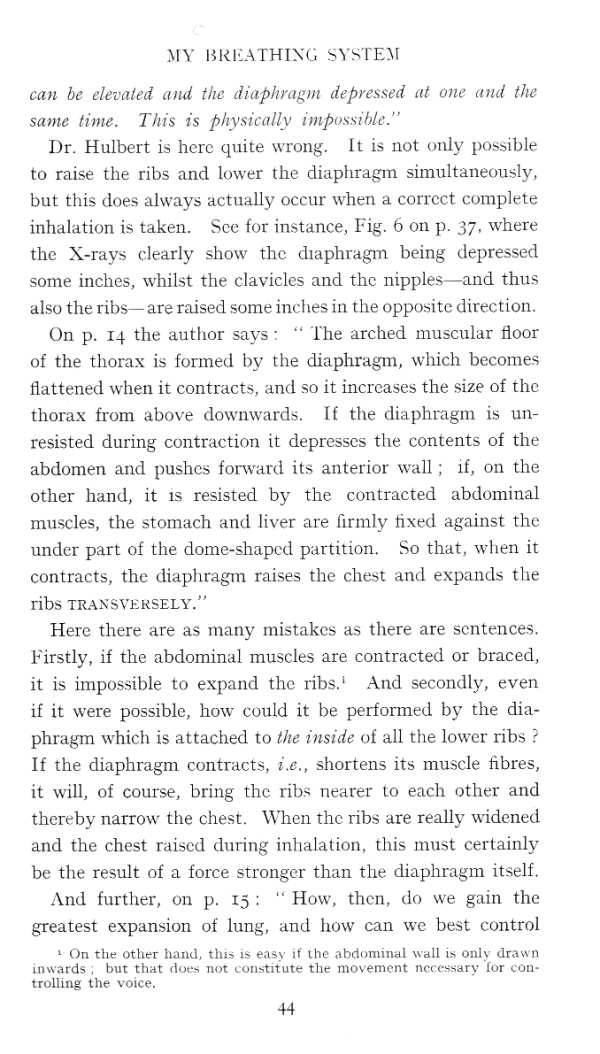mbs 044

MY UKliATHING SYSTEM
can be eleualed and thc diaphragm depressed at one and the same limę. This is physicatty impossible."
Dr. Hulbert is herc quite wrong. It is not only possible to raise the ribs and lower the diaphragm simultaneously, but this does always actnally oceur wheh a correct complete inhalation is taken. Sce for instance, Fig. 6 on p. 37, where the X-ravs clearly show thc diaphragm being depressed some inches, whilst the clavicles and thc nipples—and thus also the ribs—are raised some inches in the opposite direction.
On p. 14 the author says: " 1'he arched muscular tioor of tłie tliorax is formed by the diaphragm, which becomes flattened when it contracts, and so it incrcases the size of thc thorax from above downwards. U the diaphragm is un-resisted during contraction it depresses the contents of the abdomen and pushes forward its anterior wali; if, on the other hand, it is resisted by the contracted abdominal muscles, the stornach and liver are flrmly tixed against the under part of the dome-shaped partition. So that, when it contracts, the diaphragm raises the chest and expands the ribs TRA.N'SVERSELY.”
Here there are as many mistakes as there are scntences. Firstly, if the abdominal muscles are contracted or braced, it is impossible to expand thc ribs.1 And secondly, even if it were possible, how could it be perfonned by the diaphragm which is attached to the inside ot all the lower ribs ? If the diaphragm contracts, i.e., shortens its muscle fibres, it will, of course, bring thc ribs nearer to each other and thereby narrow the chest. When thc ribs are really widened and the chest raised during inhalation, this must certainly be tlie result of a force stronger than the diaphragm itself.
And further, on p. 15 : " How, then, do we gain the greatest expansion of lung, and how can we best control
1 On the other hand, this i* easy if the abdominal wali i>> only drawn inwards , but that does not constitute the movement nccessary lor controlling the voice.
44
Wyszukiwarka
Podobne podstrony:
mbs 125 MY BRFATHING SYSTEM thus be performed vcry quickly, which is often necessaiy, but it is real
42383 mbs 020 MY BREATHING SYSTEM always be performed rather slowly. Referencc to “ Y Tv System ” wi
mbs 035 MY BREATHING SYSTEM How to Expand and Contract the Thorax to its fullest Extent The thoracic
mbs 111 MY BREATHING SYSTEM practised until it can be periormcd unconsciously. I havc never seen thi
mbs 039 MY BREATHING SYSTEM in breathing can be verified by visual and orthodiagraphic examination.
mbs 013 MY BRKATIIING SYSTEM of gymnastics are to be competed for, or demonstrated at the Games, rea
mbs 038 MY BREATHING SYSTEM scientiiically established this fact. He said, in a recent lecture : &qu
więcej podobnych podstron